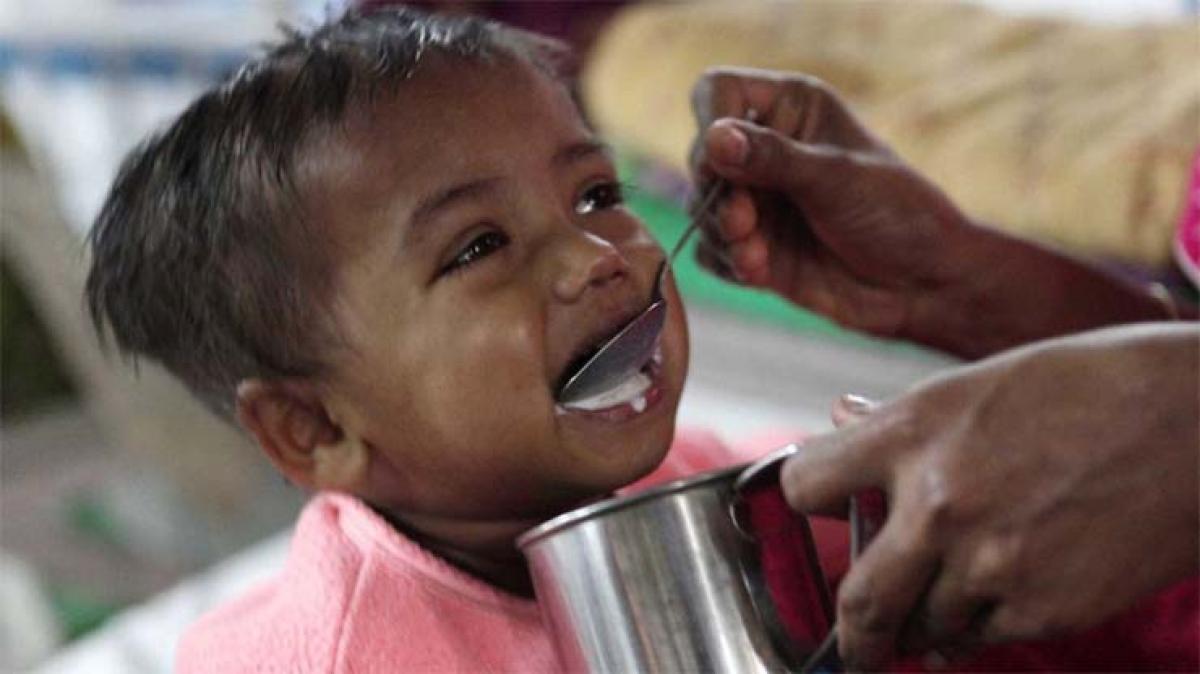Live
- Biography: Here is all about Kumara Swamy
- China steps up precautionary measures against Typhoon Kong-rey
- IND vs NZ third Test: India fail to wrest advantage, slip to 86/4 after bowling New Zealand out for 235 in first innings
- Women’s Asian Champions Trophy hockey: Indian team captain Salima Tete confident of starting new Olympic cycle on winning note
- IND vs NZ: Ravindra Jadeja takes five wickets; becomes India’s fifth-highest wicket taker in Test cricket
- ‘Jitender Reddy’ trailer: Powerful dialogues, thrilling action sequences
- Australia vs India: Indian team cancels intra-squad practice match, to focus on net and training sessions instead
- Directors Sujeeth and Sandeep reflect on ‘KA’ success
- ‘Odela 2’ team reveals Rakshas; the film’s main antagonist
- Minister Ponnam's Appeal to Public for Cooperation in BC Caste Census
Just In

x
Highlights
The word malnutrition often conjures images of children with distended bellies, ribs sticking out of their torsos and limbs hanging lankily off them. Where malnutrition is visible, concrete steps have been taken towards improving nutrition outcomes for those most adversely affected – typically, young children.
The word malnutrition often conjures images of children with distended bellies, ribs sticking out of their torsos and limbs hanging lankily off them. Where malnutrition is visible, concrete steps have been taken towards improving nutrition outcomes for those most adversely affected – typically, young children.
.jpg)
However, where malnutrition is invisible, it remains ignored. Nowhere does this ring truer, than for adolescent girls.
Adolescence is a period of rapid growth, during which the changes that occur in girls’ bodies render them susceptible to nutritional deficiencies. The onset of menstruation, in particular, can result in a deficit of iron in the body, leading to anemia.
56% of India’s 113 million adolescent girls live in the shadows of anemia. Anemic girls live compromised lives –their ability to concentrate is diminished, they are chronically fatigued, face irregular menstrual cycles and hindered growth and development.
The negative consequences of anemia during adolescence endure – impacting health, wellbeing and productivity during adulthood as well.Furthermore, children born to anemic women and girls are more likely to be born with a low birth weight, die during the first year and be sick, undernourished and anemic, thereby perpetuating the intergenerational cycle of maternal and child malnutrition.
When ignored during adolescence, anemia has long term adverse consequences. However, the growth spurt experienced during adolescence also presents a unique opportunity to catch up on deficient growth during early childhood as well as secure healthy lives for girls themselves and for future generations.Consequently, it is critical to invest in improving nutrition outcomes for adolescent girls. Dasra, a strategic philanthropy foundation working to create large scale social change, highlights this need in its report Three Square Meals – A Just Diet for India’s Adolescent Girls.
Non profit organizations across the country are working with girls, their families and the community to improve access to nutritious food, promote nutrition-smart preparation and consumption of food and facilitate better absorption of nutrients from the food consumed. Identified as a food-based strategy, this is recommended as a sustainable solution to address malnutrition among adolescent girls.
Accessing a diverse diet that comprises a variety of nutritious foods is essential to improve nutrition outcomes. In resource poor households,this involves addressing two challenges – household access to a diverse diet and gender equitable distribution of food within the household.SwayamShikshanPrayogis an NGO that trains women in rural Maharashtra and Gujarat to negotiate the usage of one acre of their household farms to cultivate vegetables, which increases the availability and consumption of nutritious food at the household level.
Where accessing land for cultivation is challenging, organizations create awareness about locally available, inexpensive foods that are rich in nutrients and demonstrate cooking methods that preserve maximum nutrients in the prepared food.
In addition to promoting access to a diverse diet, it is critical to ensure that adolescent girls consume nutritious food. In India, societal norms often dictate that adolescent girls in the household eat last and therefore, the least – receiving an insufficient quantity and poor quality of food that does not meet the needs of their growing bodies. It is therefore vital to promote awareness among key decision makers in the household about the importance of providing adequate nutrition to adolescent girls. Organizations such as Impact India Foundation work with girls and the community, creating awareness about appropriate behaviors to stay healthy during adolescence. This includes anemia identification, prevention and management, appropriate and gender-equitable nutrition for adolescent girls, menstrual hygiene management and hygienic sanitation practices.
Malnutrition traps millions of adolescent girls in a cycle of poor health and low productivity, which can be overcome by leveraging the unique window of opportunity that adolescence offers. Investing in improved nutrition outcomes for adolescent girls has the potential to break the cycle of malnutrition at the individual and intergenerational levels – and there are 113 million very good reasons to do so.
By Sneha Philip
(The author is Associate, Due Diligence Team at Dasra)

Next Story
More Stories
ADVERTISEMENT
© 2024 Hyderabad Media House Limited/The Hans India. All rights reserved. Powered by hocalwire.com







